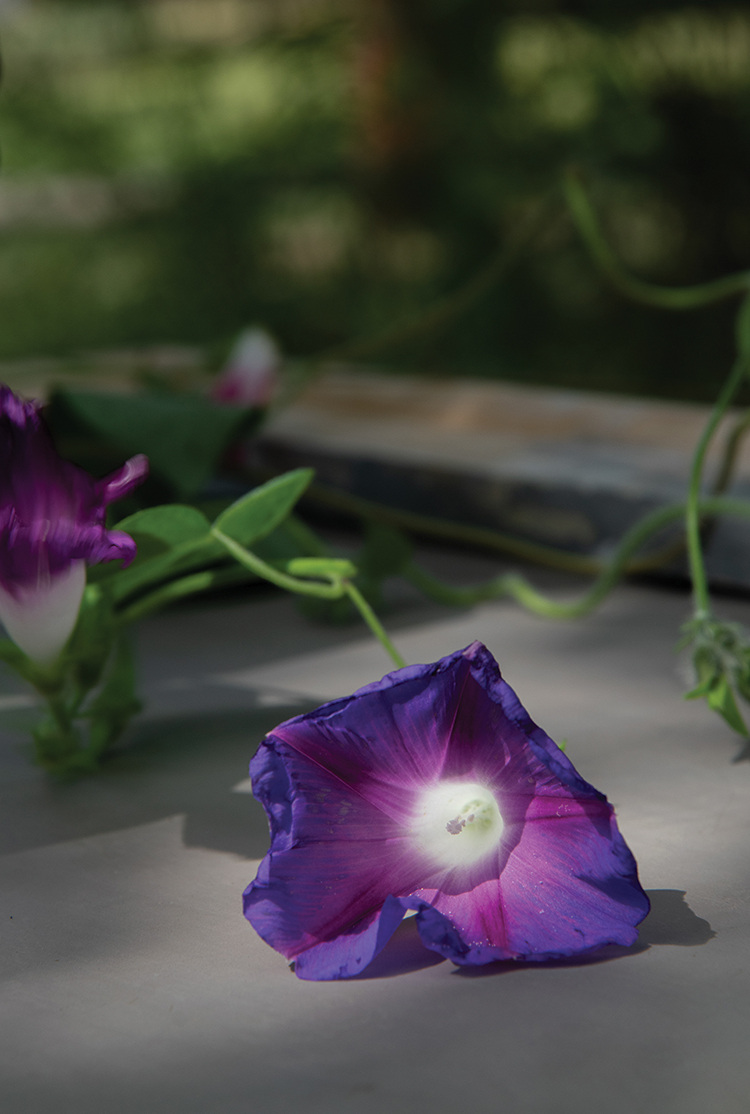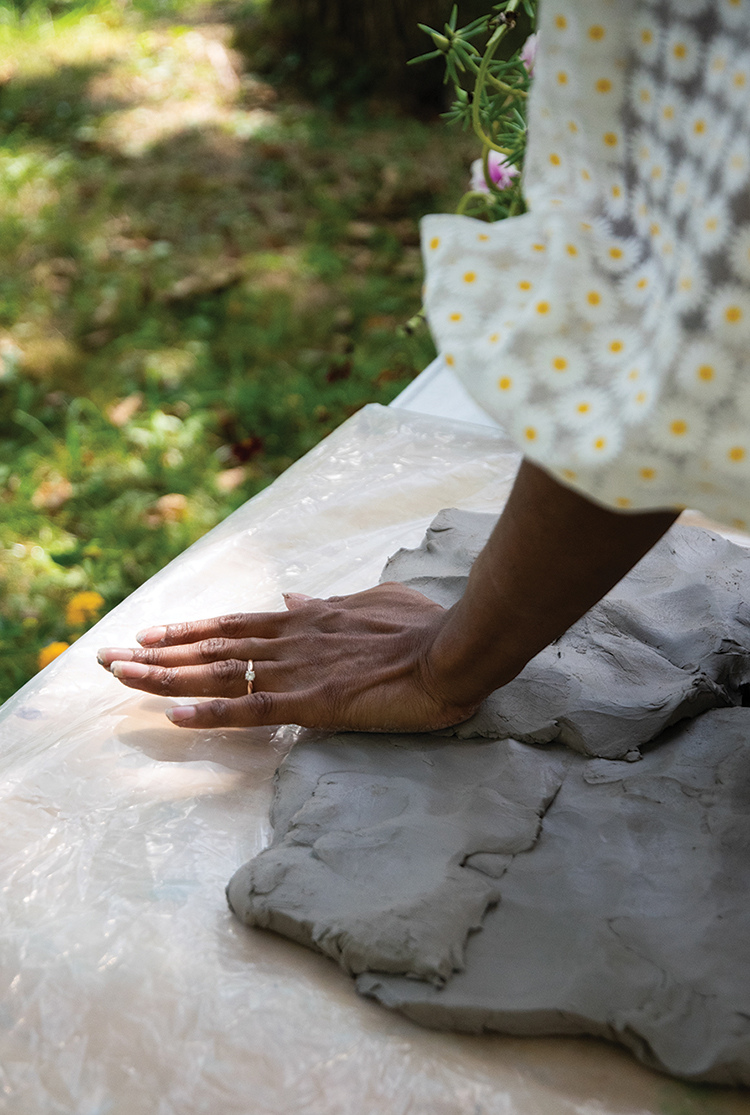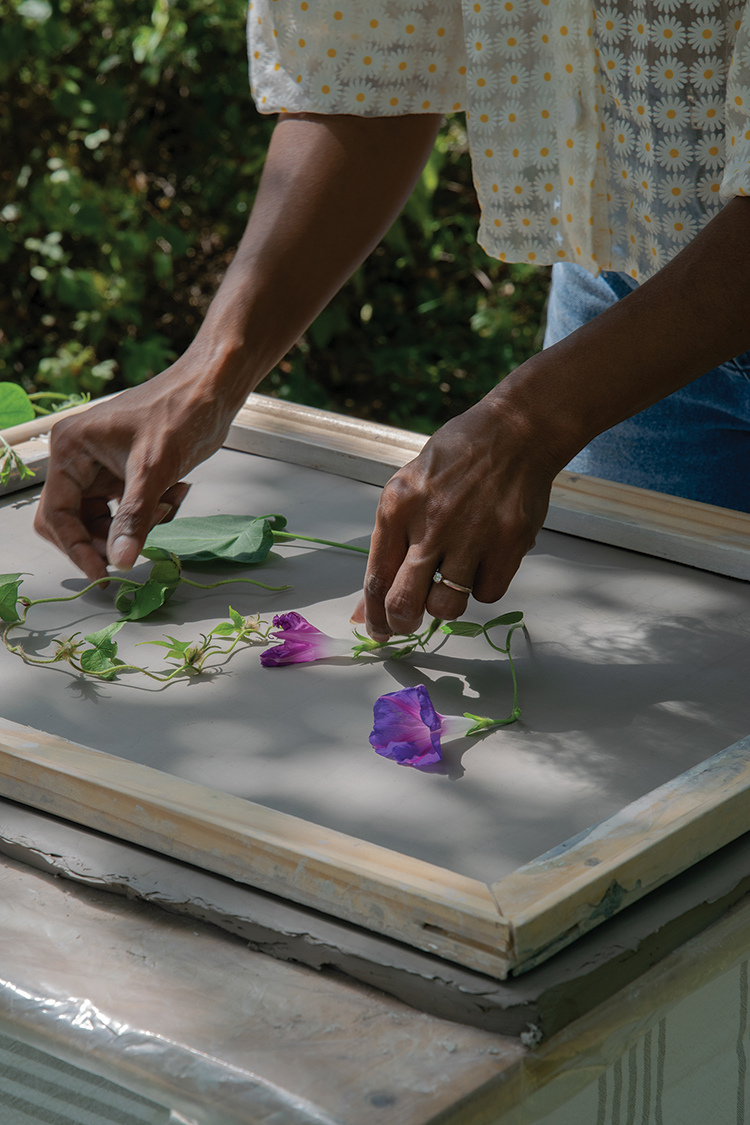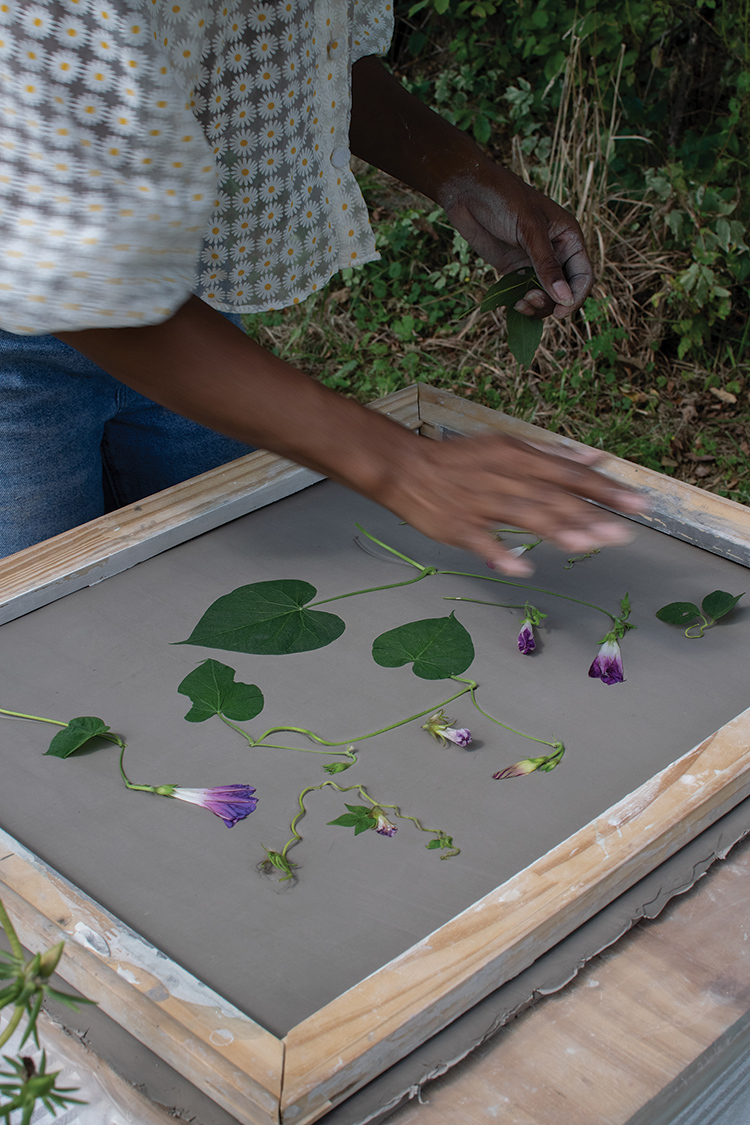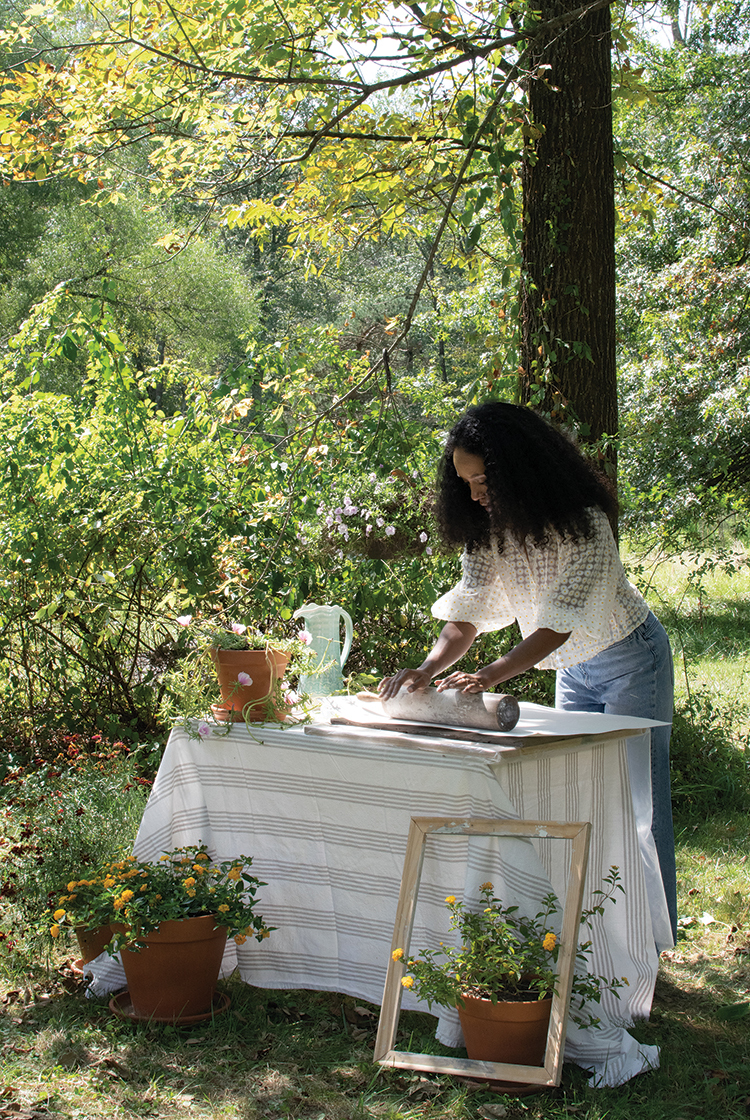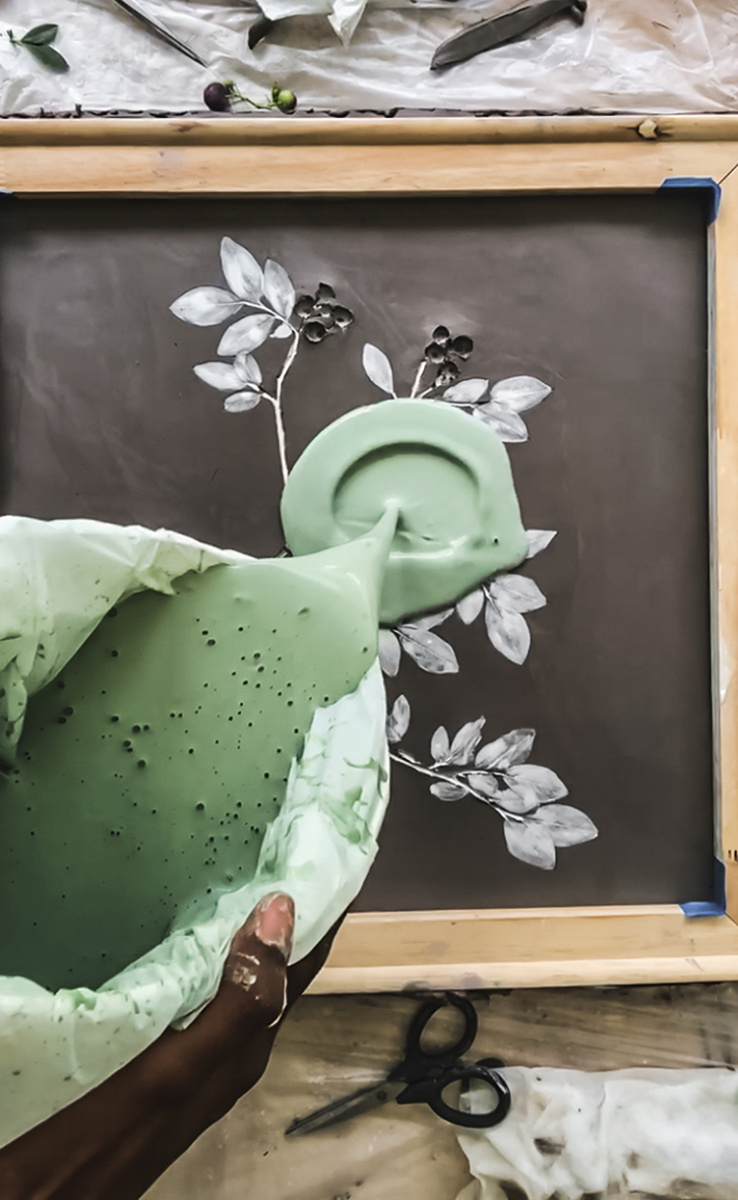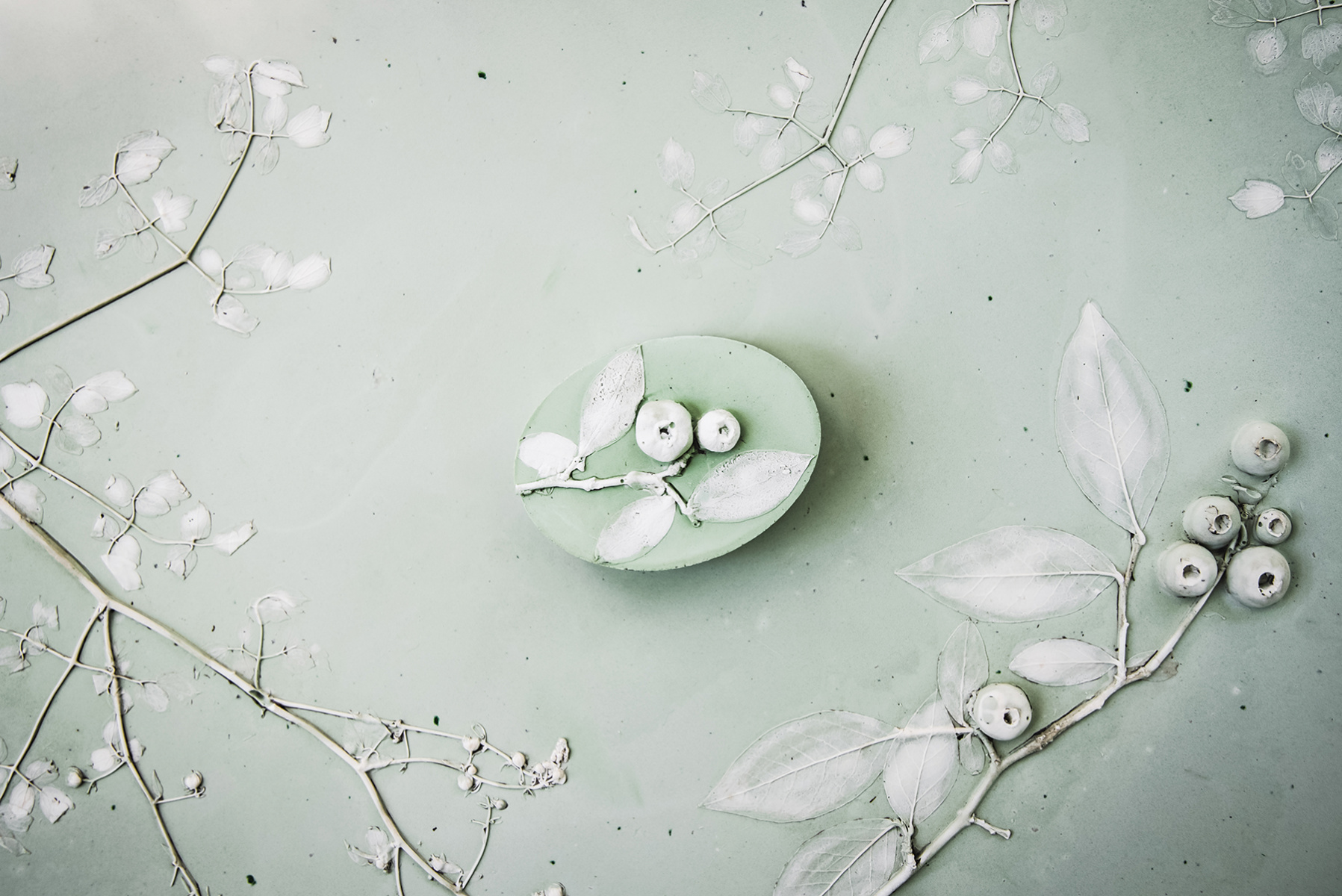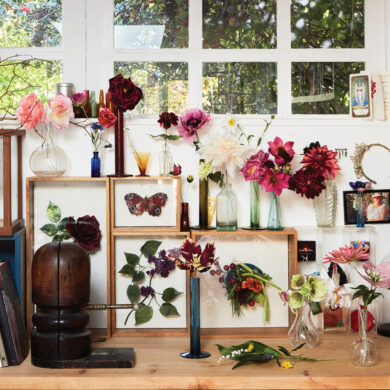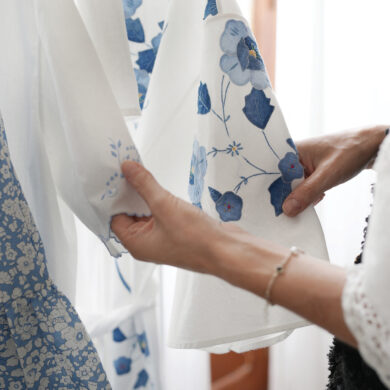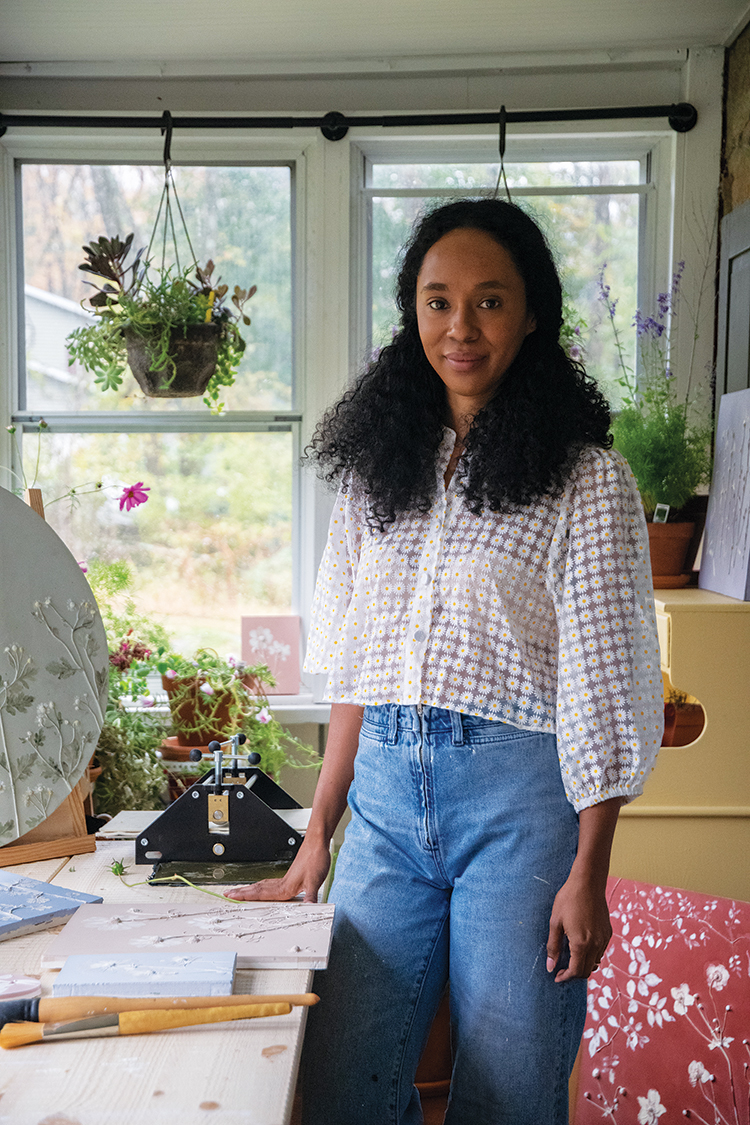
My home is located in Quakertown, Pennsylvania, but I grew up in Philadelphia. Before starting my art career, I worked in the restaurant industry for over ten years. There I met my wonderful husband, who provided me with the support I needed to become an artist. Creativity has enabled me to imagine a life in which I’m able to do what I love.
I started creating when I was four years old. My teacher gave everyone in the classroom crayons and paper. I decided to draw the tulips that were in a vase on the teacher’s desk in front of me, and I remember feeling shocked at how good it was.
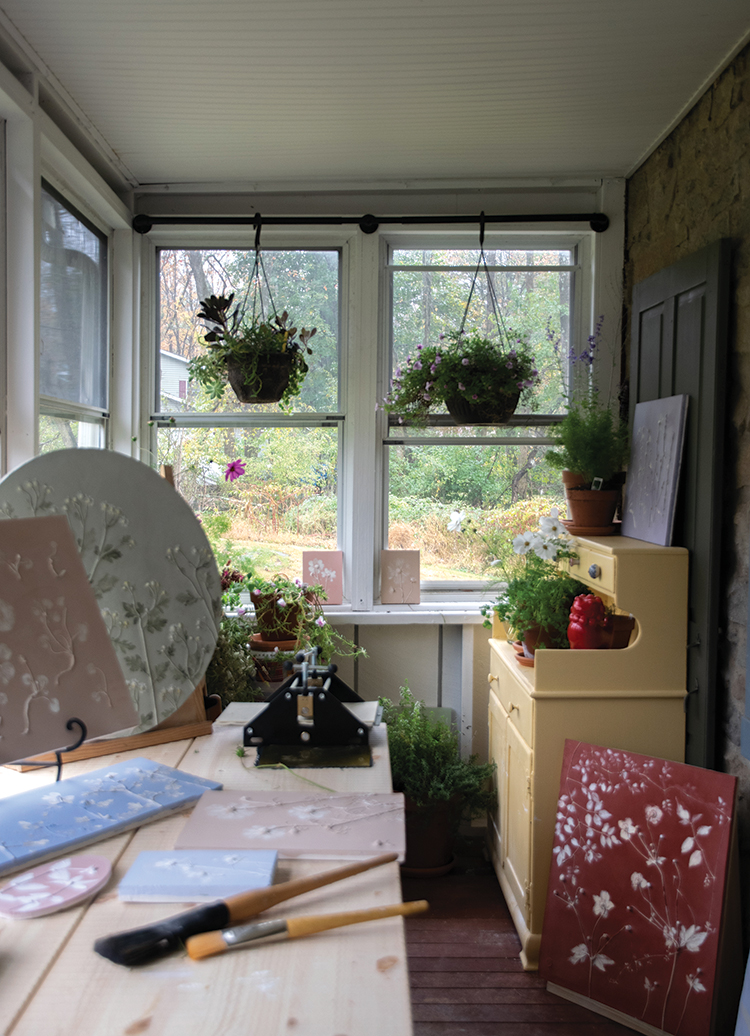
Create an environment where you can truly thrive at your own pace and in your own way.
Ever since, I became obsessed with flowers. I would look for them everywhere. I began collecting every flower I could find. I would often fall behind everyone else while walking, because I was too busy looking for flowers growing through the pavement cracks. I started carrying a book with me to store the flowers I found. I had no idea I was making a herbarium, I just wanted a way to keep the flowers from getting crushed.
As a full-time artist, my work is my life. I mean that in the best way. I’ve found something I’m naturally good at and turned it into a career. I don’t feel the need to separate it from my personal life. They coexist together.
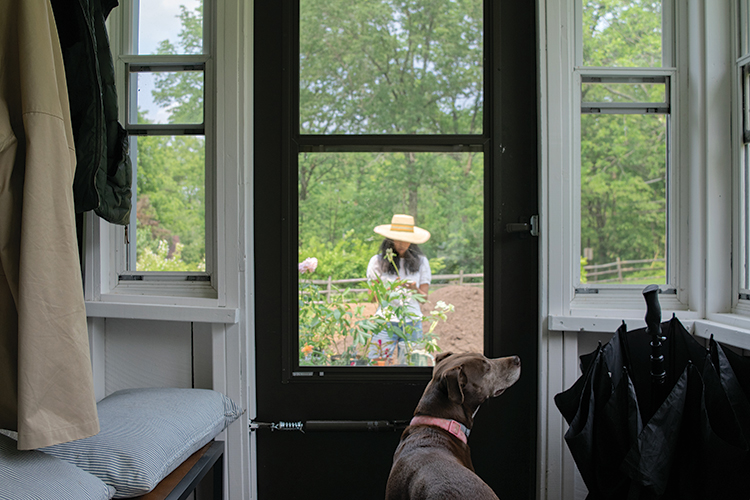
I’ve always had a passion to create. It started when I was a little girl. I didn’t really understand what to do with it and, without guidance, it was left dormant until a few years ago.
Four years ago I started making my first floral reliefs. It was shortly after being inspired by a small metal flower relief that I spotted on the corner of a larger artwork at the Barnes Museum in Philadelphia. After many failed attempts with different mediums, I landed on clay and plaster. From there I committed to making one every day, and every day they slowly improved. Since I didn’t go to school for art, I had to create that discipline for myself. I would press every flower I could find. Over time, it felt natural to make them–almost effortless.
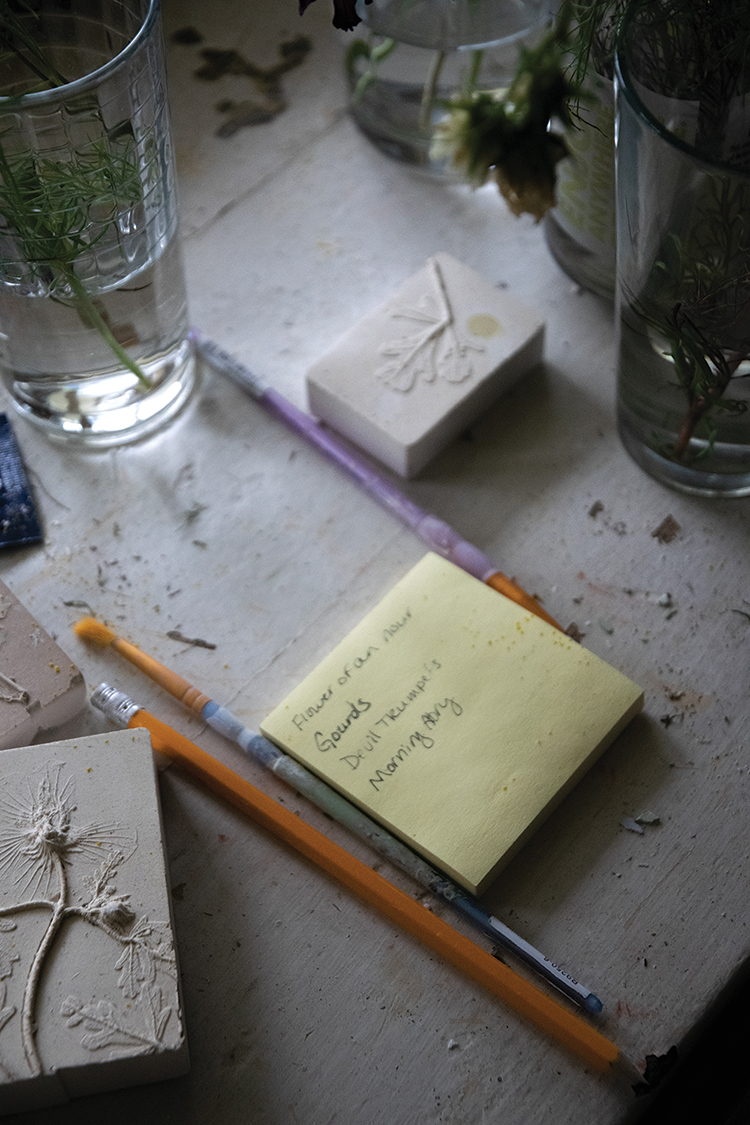
Before I start, I make a list of flowers in my garden. Then, I sketch how I will lay out the flowers, in what shape frame is best, adjusting as needed. Now I’m ready to forage for the flowers I plan to use.
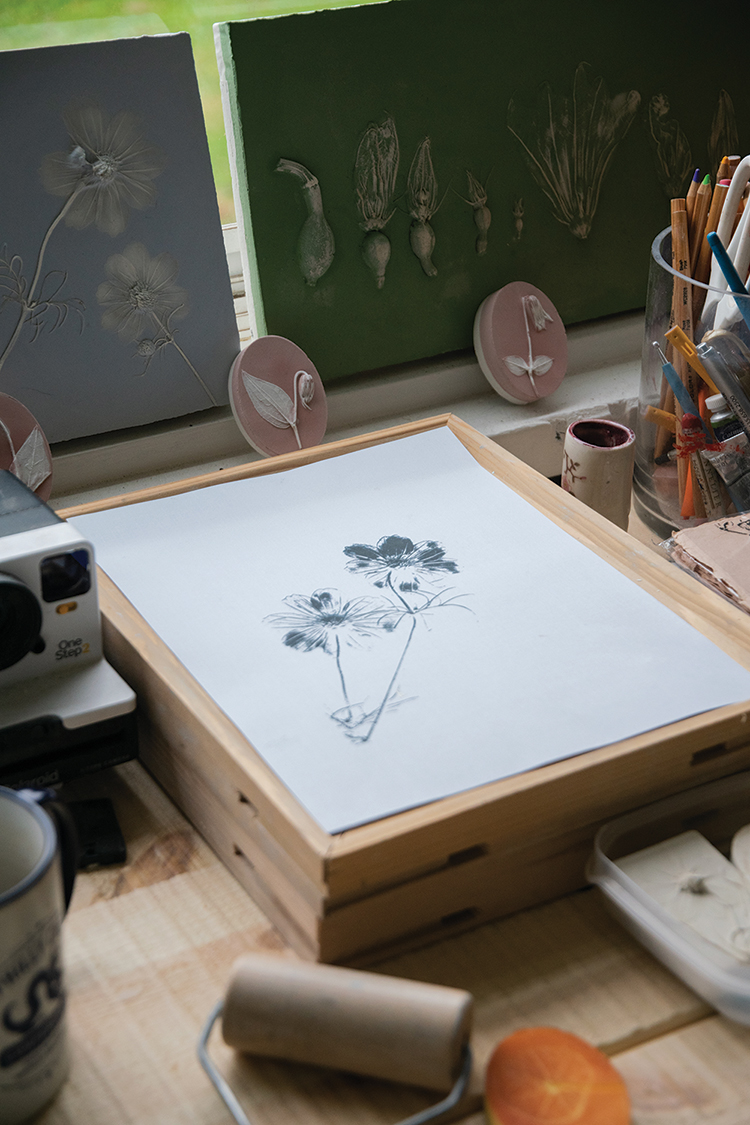
I then cut and prepare the clay by rolling it by hand until it is smooth and even. I find this part very therapeutic. It can take hours to make an even layer of clay. During that time I like to daydream. I find that I’m a better artist when I set aside time for my mind to wander. It clears out all the clutter that may be lingering in my head.
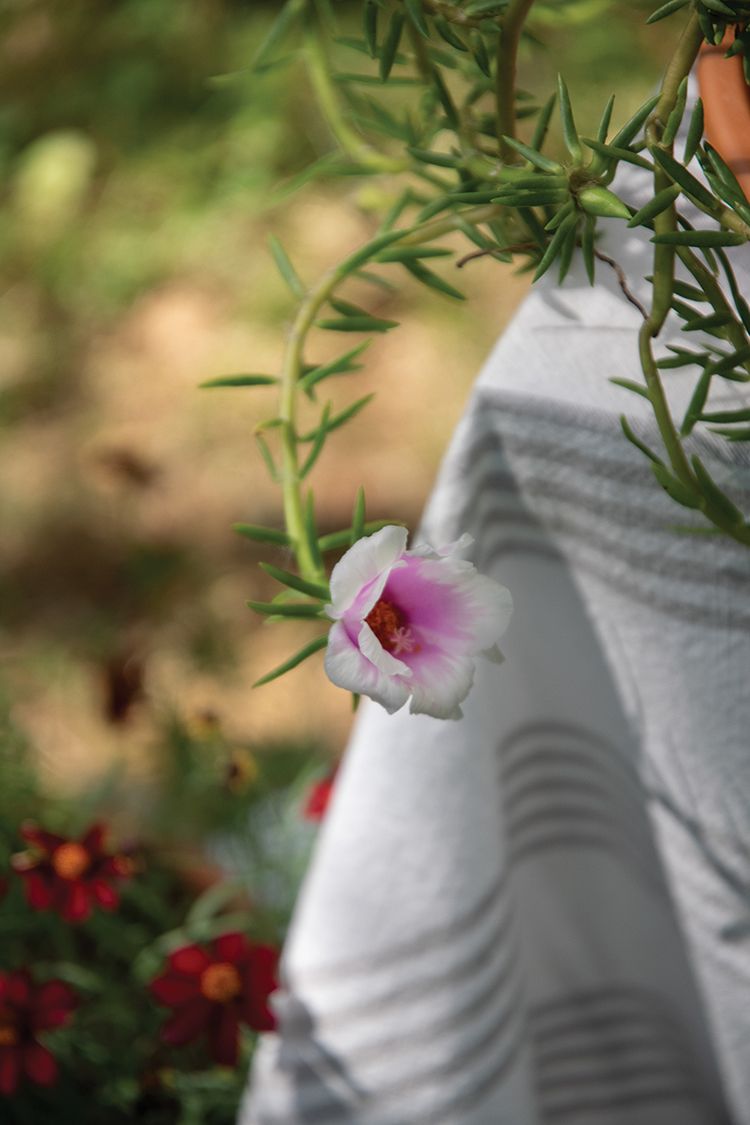
I start by rolling the clay by hand until it is smooth and even. I create different shaped frames for my pieces. The square and rectangle ones are made from stretcher bars; for the round and oval ones I use wooden frames.
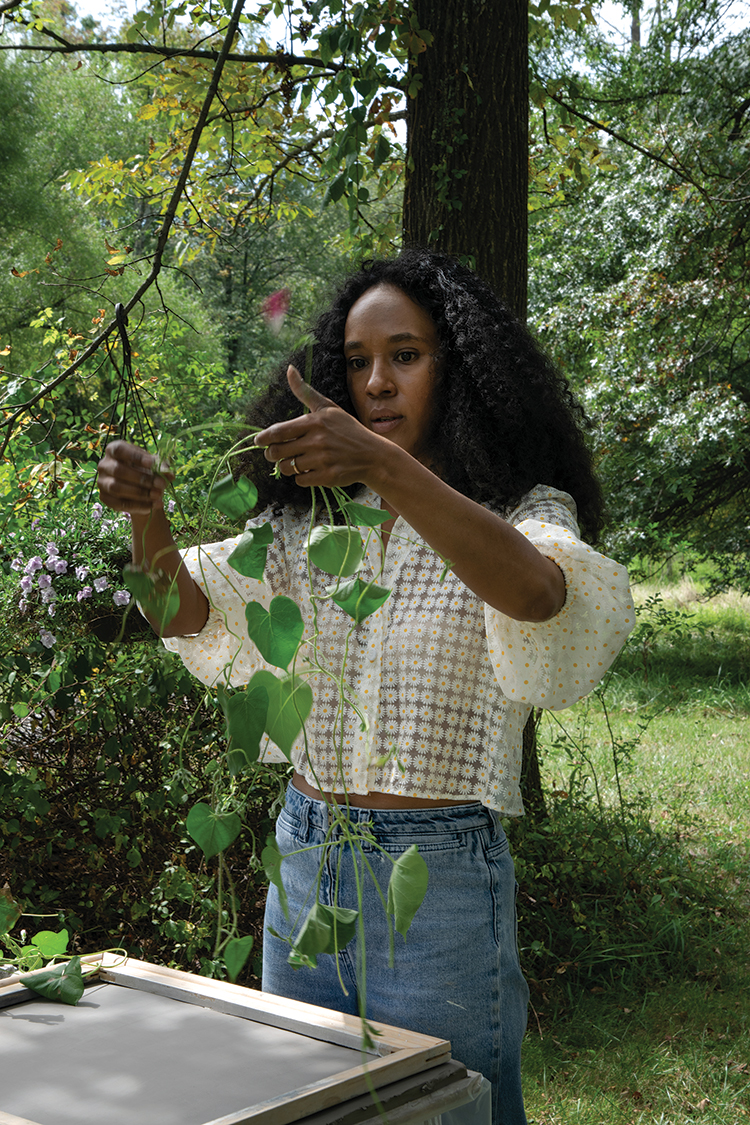
Once the clay is ready, I arrange and press the flowers into the clay, creating deep impressions.
I don’t go looking for inspiration anymore. I feel very content within my medium. But inspiration always finds me. When it does, I allow it to lead.
Each flower then has to be carefully removed before pouring my plaster mix. After that, I wait. The entire process takes a lot of patience, but the waiting is usually when my serenity is tested. Wait too long, and the plaster doesn’t peel away cleanly from the clay. Don’t wait long enough, and the plaster will break. When the time is just right, I slowly peel back the clay to reveal the beautiful floral details left behind.
My creative style is very much inspired by Wedgwood Jasperware. Even in the beginning, when I was only creating white pieces, I knew I wanted them to eventually be in color. My mother-in-law, Dorothy, was an antique collector, so she had some pieces in her home. I loved the cameo look with the white relief decorations and knew it would translate well for my floral reliefs.
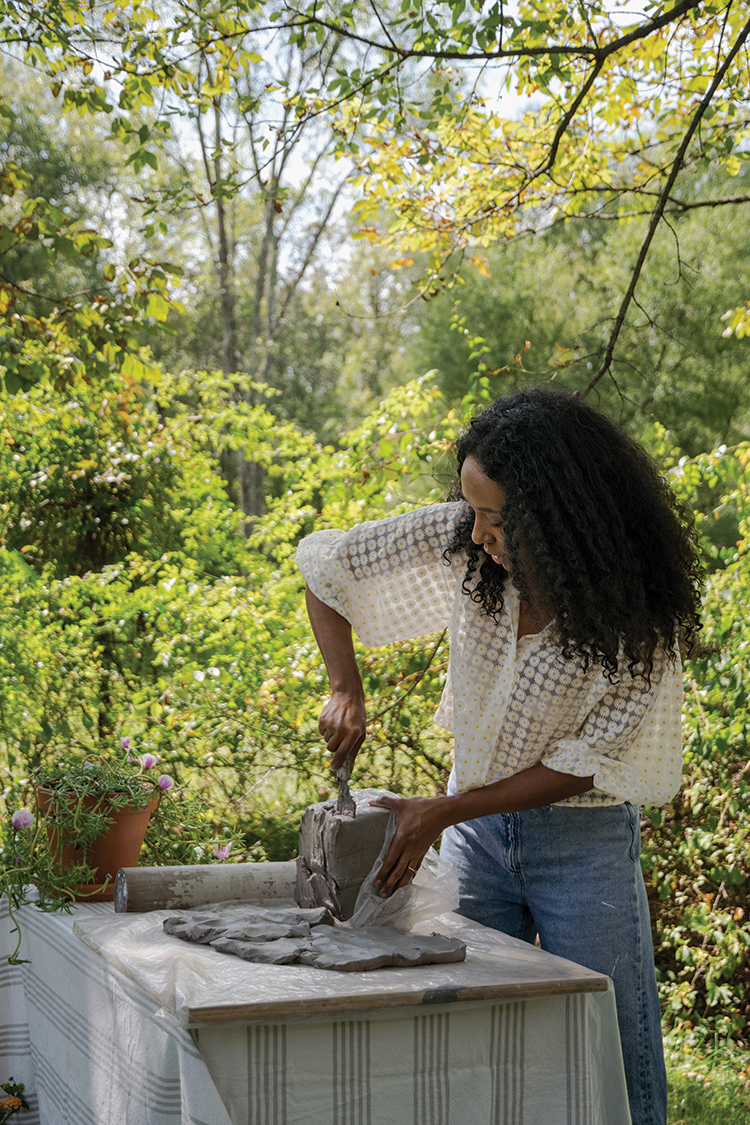
For my first art show with color, I painted the finished plaster pieces with acrylic paint. They didn’t quite have that Jasperware feel, but they were still beautiful, and one could see my intention. It took time to finesse my individual technique for adding tinted pastel plaster. After the relief has dried completely, one of my final steps is brushing off the dried clay residue.
My biggest challenge with creating is not being able to keep up with demand. I am fortunate to have a community that not only loves my work, but financially supports my art endeavors. The pressure to make enough for everyone can become overwhelming. It would be impossible to do so unless I mass-produced my art, which I’m not willing to do.
Last year I found myself in full production mode and hated it. I could feel the artist in me diminishing, and that’s when I realized that the business depends on my being an artist first, not the other way around. After a much-needed break, I found it very difficult to put myself through it again. Setting a different pace for myself was the only way I could come back to what I love. Working at such an extreme capacity took the inspiration right out of me.
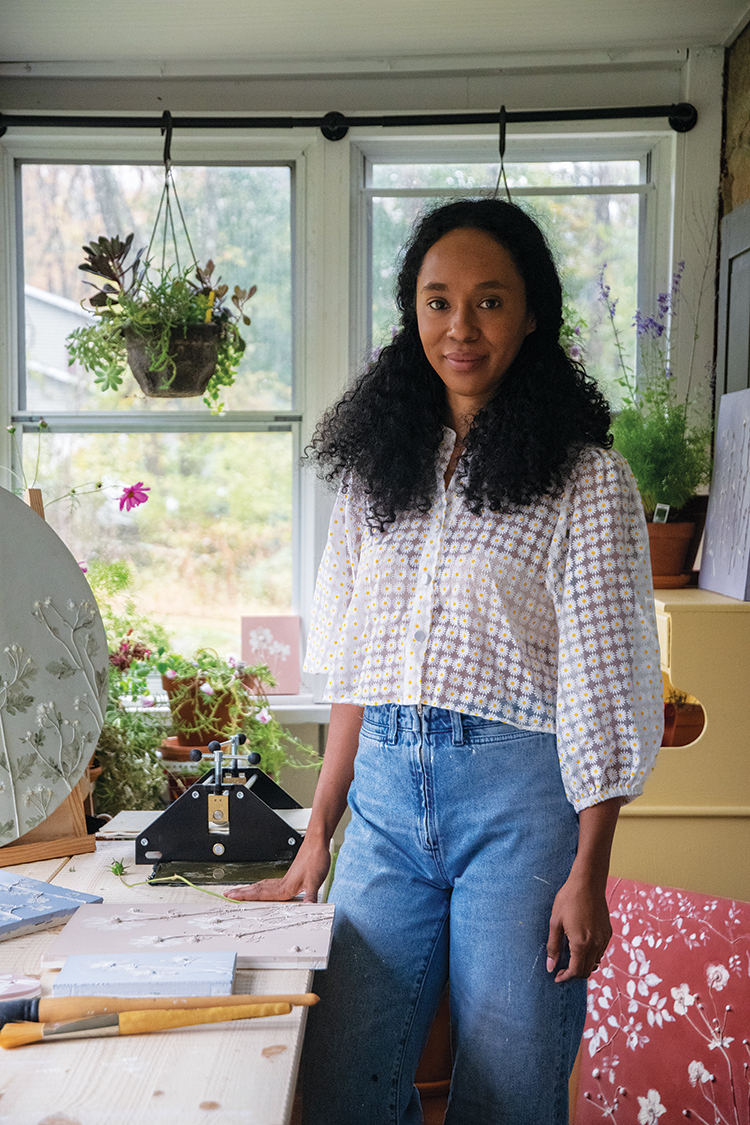
I’m taking my time now. I’m no longer creating to meet demands. Making less allows me to live. I want to hang out with my family and be among my community more, and have long conversations with friends on the phone. It’s hard to maintain inspiration when I’m working all the time. I love my art form, but it’s very labor intensive and time-consuming. So I’ve cut back on how many pieces I will make.
“I want to live in a place where I don’t have to try so hard all the time.”
—David Robinson (my hubby)
A more deliberate way of creating will not only be better for me and my well-being, but even better for the planet. To keep up with the pace of demand, I found myself creating a lot more waste and making too many mistakes. Working slower allows me to take meaningful steps in my process.
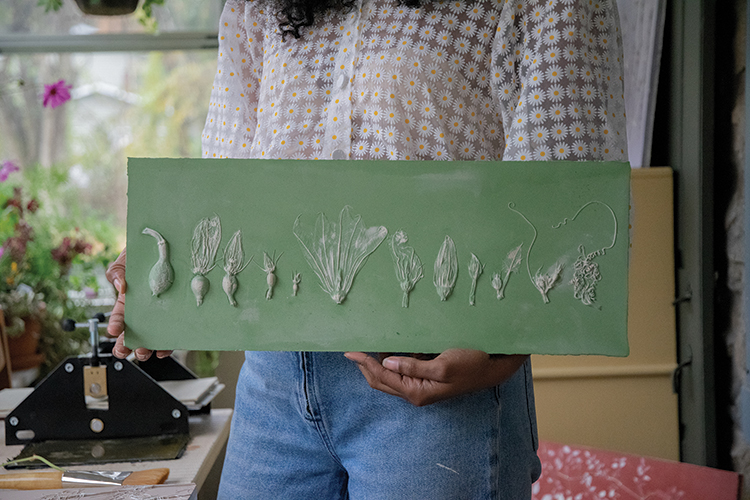
One of the biggest lessons I’ve learned is that as you continue to grow and become more successful, you have to make it easier for yourself without jeopardizing your art. Don’t feel guilty for doing this. Work smarter, not harder, so that you can thrive as an artist.

My home is located in Quakertown, Pennsylvania, but I grew up in Philadelphia. Before starting my art career, I worked in the restaurant industry for over ten years. There I met my wonderful husband, who provided me with the support I needed to become an artist. Creativity has enabled me to imagine a life in which I’m able to do what I love.
I started creating when I was four years old. My teacher gave everyone in the classroom crayons and paper. I decided to draw the tulips that were in a vase on the teacher’s desk in front of me, and I remember feeling shocked at how good it was.

Create an environment where you can truly thrive at your own pace and in your own way.
Ever since, I became obsessed with flowers. I would look for them everywhere. I began collecting every flower I could find. I would often fall behind everyone else while walking, because I was too busy looking for flowers growing through the pavement cracks. I started carrying a book with me to store the flowers I found. I had no idea I was making a herbarium, I just wanted a way to keep the flowers from getting crushed.
As a full-time artist, my work is my life. I mean that in the best way. I’ve found something I’m naturally good at and turned it into a career. I don’t feel the need to separate it from my personal life. They coexist together.

I’ve always had a passion to create. It started when I was a little girl. I didn’t really understand what to do with it and, without guidance, it was left dormant until a few years ago.
Four years ago I started making my first floral reliefs. It was shortly after being inspired by a small metal flower relief that I spotted on the corner of a larger artwork at the Barnes Museum in Philadelphia. After many failed attempts with different mediums, I landed on clay and plaster. From there I committed to making one every day, and every day they slowly improved. Since I didn’t go to school for art, I had to create that discipline for myself. I would press every flower I could find. Over time, it felt natural to make them–almost effortless.

Before I start, I make a list of flowers in my garden. Then, I sketch how I will lay out the flowers, in what shape frame is best, adjusting as needed. Now I’m ready to forage for the flowers I plan to use.

I then cut and prepare the clay by rolling it by hand until it is smooth and even. I find this part very therapeutic. It can take hours to make an even layer of clay. During that time I like to daydream. I find that I’m a better artist when I set aside time for my mind to wander. It clears out all the clutter that may be lingering in my head.

I start by rolling the clay by hand until it is smooth and even. I create different shaped frames for my pieces. The square and rectangle ones are made from stretcher bars; for the round and oval ones I use wooden frames.

Once the clay is ready, I arrange and press the flowers into the clay, creating deep impressions.
I don’t go looking for inspiration anymore. I feel very content within my medium. But inspiration always finds me. When it does, I allow it to lead.
Each flower then has to be carefully removed before pouring my plaster mix. After that, I wait. The entire process takes a lot of patience, but the waiting is usually when my serenity is tested. Wait too long, and the plaster doesn’t peel away cleanly from the clay. Don’t wait long enough, and the plaster will break. When the time is just right, I slowly peel back the clay to reveal the beautiful floral details left behind.
My creative style is very much inspired by Wedgwood Jasperware. Even in the beginning, when I was only creating white pieces, I knew I wanted them to eventually be in color. My mother-in-law, Dorothy, was an antique collector, so she had some pieces in her home. I loved the cameo look with the white relief decorations and knew it would translate well for my floral reliefs.

For my first art show with color, I painted the finished plaster pieces with acrylic paint. They didn’t quite have that Jasperware feel, but they were still beautiful, and one could see my intention. It took time to finesse my individual technique for adding tinted pastel plaster. After the relief has dried completely, one of my final steps is brushing off the dried clay residue.
My biggest challenge with creating is not being able to keep up with demand. I am fortunate to have a community that not only loves my work, but financially supports my art endeavors. The pressure to make enough for everyone can become overwhelming. It would be impossible to do so unless I mass-produced my art, which I’m not willing to do.
Last year I found myself in full production mode and hated it. I could feel the artist in me diminishing, and that’s when I realized that the business depends on my being an artist first, not the other way around. After a much-needed break, I found it very difficult to put myself through it again. Setting a different pace for myself was the only way I could come back to what I love. Working at such an extreme capacity took the inspiration right out of me.

I’m taking my time now. I’m no longer creating to meet demands. Making less allows me to live. I want to hang out with my family and be among my community more, and have long conversations with friends on the phone. It’s hard to maintain inspiration when I’m working all the time. I love my art form, but it’s very labor intensive and time-consuming. So I’ve cut back on how many pieces I will make.
“I want to live in a place where I don’t have to try so hard all the time.”
—David Robinson (my hubby)
A more deliberate way of creating will not only be better for me and my well-being, but even better for the planet. To keep up with the pace of demand, I found myself creating a lot more waste and making too many mistakes. Working slower allows me to take meaningful steps in my process.

One of the biggest lessons I’ve learned is that as you continue to grow and become more successful, you have to make it easier for yourself without jeopardizing your art. Don’t feel guilty for doing this. Work smarter, not harder, so that you can thrive as an artist.












